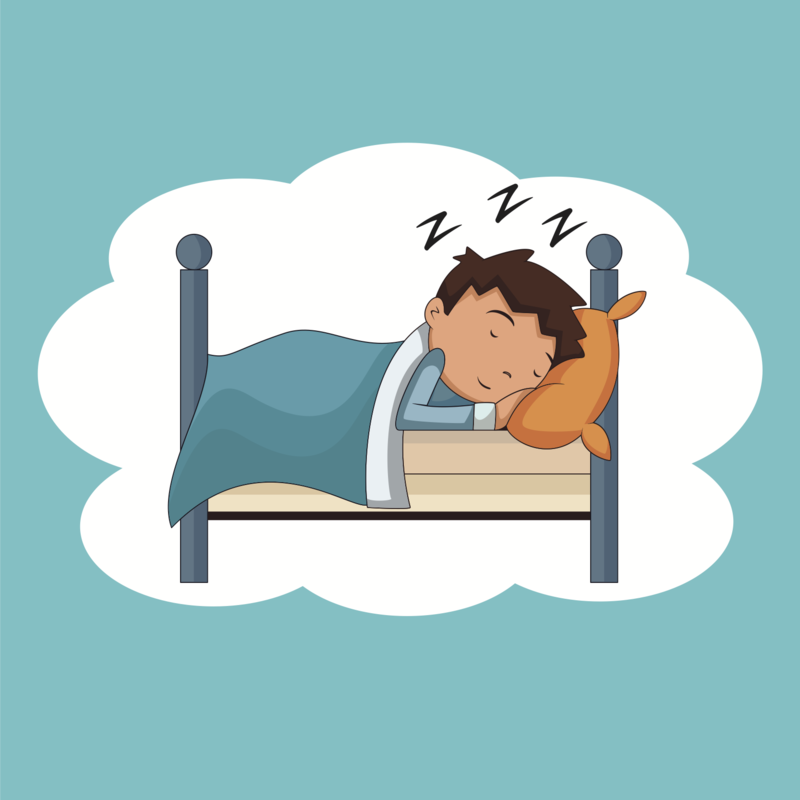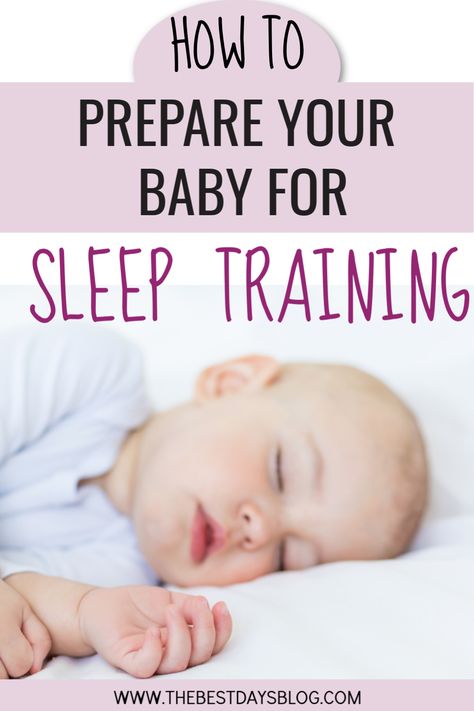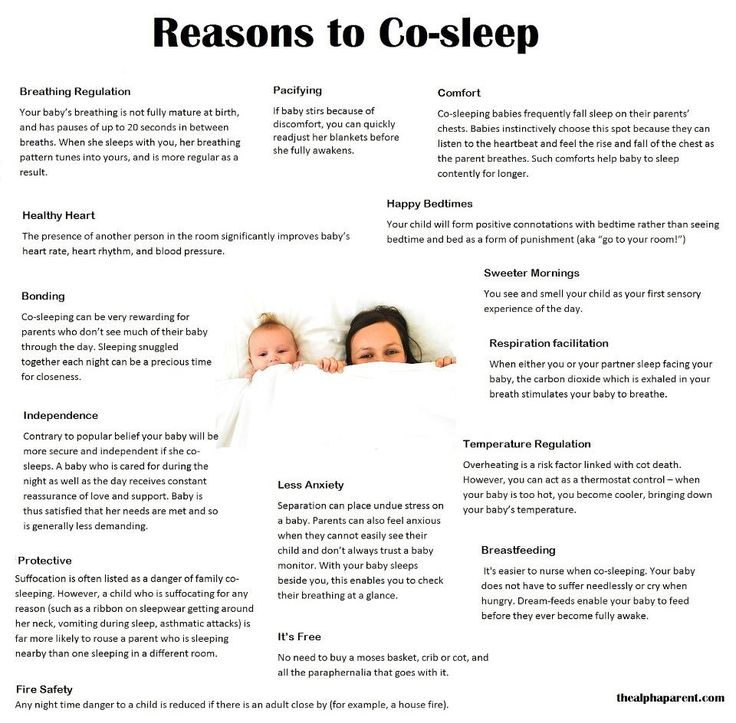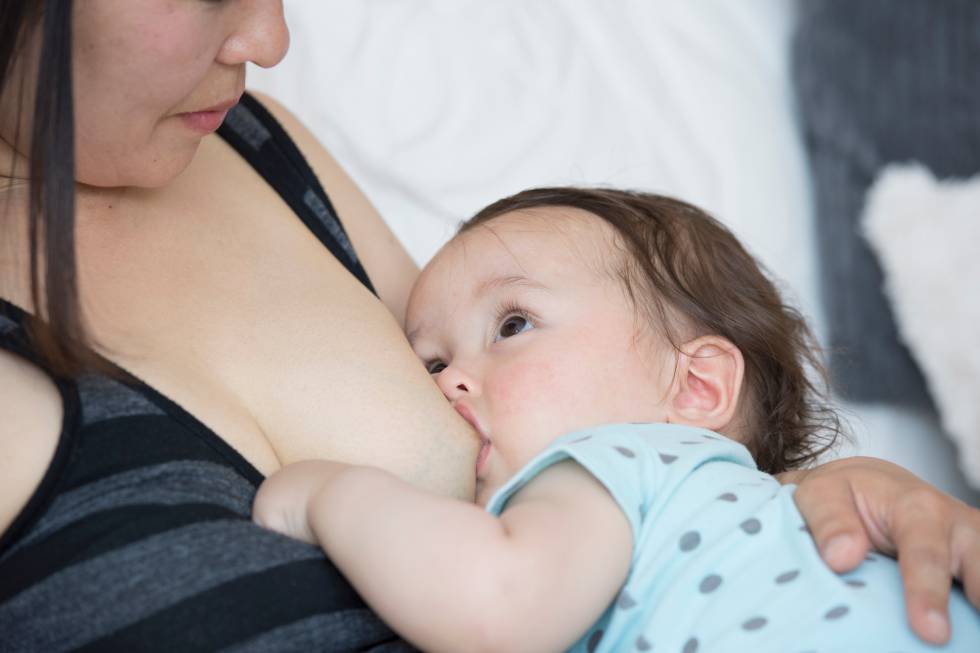How to dream feed a sleeping baby
What is a dream feed—and how do I do it?
For some breastfeeding babies, a “dream feed” may be the answer to getting them to sleep through the night. Here’s how it works.
If it’s your dream to have your baby sleep through the night, a “dream feed” may be one way to make that happen. A dream feed involves feeding your baby when they’re still sleeping. Typically, dream feeds are done around 10 or 11 p.m., before you’ve gone to bed for the night. The idea is that a baby will sleep longer through the night and, ideally, until morning on a full stomach.
How do dream feeds work?If you want to give your baby a dream feed, put them down for bed at the time you normally would. Then, around 10 or 11 p.m., gently get your baby out of their crib and put them at your breast or give them a bottle, all without waking them up. “The great thing about babies is that they have a natural instinct to suck if they’re at a nipple,” says Jason Freedman, co-author of the book The Dream Feed Method.
When you pick up your sleeping baby for the feed, the key is to minimize stimulation—don’t turn on the lights, sing or change their diaper unless there’s poop in it. When the feed is done, gently place your baby back in bed and slip out of the room.
“It can work beautifully for some kids,” says Alanna McGinn, a sleep consultant and founder of Good Night Sleep Site, “but for some babies, it won’t work.” While some babies will take that full tummy and sleep until morning, others will wake up fully at a dream feed and have difficulty getting back to sleep. For others, the feed might go well, but they will still wake up throughout the night, so it doesn’t accomplish its purpose. Your baby may also start waking up frequently at 3 or 4 a.m.—another sign that dream feeds aren’t working, says McGinn. “Because we’ve disturbed the sleep pattern, they might have trouble getting back into a regular rhythm,” she explains.
Dream feeds also won’t work for all parents—you may prefer to go to bed at 8 or 9 p. m. and sleep through until your baby’s first natural wake-up. That’s OK, too, says McGinn. But if you want to try a dream feed, you could have dad (or a non-breastfeeding parent) give the dream feed with a bottle of pumped breastmilk or formula and allow mom to continue to sleep through until the next waking. “It’s a great way to split up the feeds between parents,” says McGinn.
m. and sleep through until your baby’s first natural wake-up. That’s OK, too, says McGinn. But if you want to try a dream feed, you could have dad (or a non-breastfeeding parent) give the dream feed with a bottle of pumped breastmilk or formula and allow mom to continue to sleep through until the next waking. “It’s a great way to split up the feeds between parents,” says McGinn.
Dream feeds can start at any age and go on for as long as you’re willing and as long they’re working. But when McGinn is working with clients to improve their baby’s sleep, she typically suggests weaning them off dream feeds by about eight months, as most babies should be able to sleep through the night without feeding at that age. Their bellies will typically be large enough that they can drink enough milk before bed and it will carry them through the night. Still, check with your baby’s doctor to make sure that they are otherwise healthy and don’t need a night-time feed for nutritional reasons. If your baby is less than eight months old and you’re embarking on a sleep training plan, a dream feed can be a helpful tool, particularly if you’re worried about your baby getting enough calories in the night.
If your baby is less than eight months old and you’re embarking on a sleep training plan, a dream feed can be a helpful tool, particularly if you’re worried about your baby getting enough calories in the night.
Although dream feeding most often refers to one late-night feed to get your baby through until morning, in The Dream Feed Method, co-authors Freedman and Stacy Karol say that incorporating dream feeds all night long can be an effective way to encourage very young babies—less than four months old—to sleep through the night. By pre-emptively getting up and feeding your newborn at, say, 1 and 4 a.m., Freedman says you can reduce the amount your baby cries. If you follow a schedule, as outlined in the book, where you gradually move up the timing of the feeds, you can have your baby sleeping through the night by four months. While Freedman says that this method won’t work for all babies, he and his wife used the dream feed method for their three children with great success. With Freedman taking on the night-time feeds, his wife was able to sleep from 11 p.m. to 7 a.m. Now that’s dreamy.
While Freedman says that this method won’t work for all babies, he and his wife used the dream feed method for their three children with great success. With Freedman taking on the night-time feeds, his wife was able to sleep from 11 p.m. to 7 a.m. Now that’s dreamy.
Stay in touch
Subscribe to Today's Parent's daily newsletter for our best parenting news, tips, essays and recipes.- Email*
- CAPTCHA
- Consent*
Yes, I would like to receive Today's Parent's newsletter. I understand I can unsubscribe at any time.**
FILED UNDER: baby sleep Bottle-feeding Breastfeeding Newborn care Newborn sleep service seo
What Is Dream Feeding? And How Do I Dream Feed? – Happiest Baby
By Dr. Harvey Karp, MD, FAAP
On This Page
- Dream Feeding: What It Is
- How to Dream Feed
- How to Get Your Baby Back to Sleep
- Dream Feeding Tips
- Dream Feeding Benefits
- Adding a Second Dream Feed
- When to Stop Dream Feeds
- Final Thoughts on Dream Feeds
Newborn babies eat a lot. Breastfed infants eat about every two to three hours and formula-fed babies hit the bottle every three to four hours…and that doesn’t stop when bedtime calls. In fact, bottle-fed babies often continue night feedings until they’re around 6 months old, whereas breastfed babies may continue up to a year. But that doesn’t mean that there’s nothing you can do to tame night-waking. If your little one wakes up hungry each night, it’s smart to increase daytime milk (research shows that infants who received more milk or solid feeds during the day are less likely to feed at night) and boost their evening calories by way of a dream feed. Think of a dream feed as topping off your car’s gas tank...so there's no need to refuel during the journey ahead. Offering your baby a dream feed will eliminate—or at least delay—one of the top reasons babies wake through the night: a rumbling tummy.
Breastfed infants eat about every two to three hours and formula-fed babies hit the bottle every three to four hours…and that doesn’t stop when bedtime calls. In fact, bottle-fed babies often continue night feedings until they’re around 6 months old, whereas breastfed babies may continue up to a year. But that doesn’t mean that there’s nothing you can do to tame night-waking. If your little one wakes up hungry each night, it’s smart to increase daytime milk (research shows that infants who received more milk or solid feeds during the day are less likely to feed at night) and boost their evening calories by way of a dream feed. Think of a dream feed as topping off your car’s gas tank...so there's no need to refuel during the journey ahead. Offering your baby a dream feed will eliminate—or at least delay—one of the top reasons babies wake through the night: a rumbling tummy.
Dream feeding is when you rouse your baby—without fully waking them up—to feed them one more time before you turn in for the night. Babies who go to sleep between 6pm and 8pm often wake out of hunger in the middle of the night. But research has shown that sneaking in an extra feed between 10pm and midnight can reduce night wakings, helping babies stay asleep until a more “reasonable” time of the morning. This can become part of your little one’s regular sleep schedule.
Babies who go to sleep between 6pm and 8pm often wake out of hunger in the middle of the night. But research has shown that sneaking in an extra feed between 10pm and midnight can reduce night wakings, helping babies stay asleep until a more “reasonable” time of the morning. This can become part of your little one’s regular sleep schedule.
The goal of a dream feed is to offer your little one more meal before you hit the hay, so that you and your baby’s schedule sync better…and you both sleep better. Ready to try it? Follow these steps:
-
Step 1: Gently take your baby out of the bassinet or crib between 10pm and 12am, or whenever when you go to bed. Keep the room dim and quiet, except for white noise. Doing this during Baby’s more active REM sleep is ideal. During REM sleep your baby may flutter their eyelids, make little squeaks and squawks, or move around more than usual.

-
Step 2: Keep your baby swaddled. There’s no need to unswaddle—or change your baby’s diaper—if they’ll take the feed that way and their diaper isn’t soiled. (If your baby is super sleepy, you may need to rouse them a bit by gently tickling their toes.)
-
Step 3: Touch Baby’s cheek with your breast or bottle. Placing your breast or bottle on your baby's cheek or lower lip will wake up their rooting reflex and get your baby to start eating.
-
Step 4: Offer a brief feed. Encourage nursing for 5 to 10 minutes on each side. For bottle-fed babies, try for about 3 ounces.
-
Step 5: Burp your baby. Many parents ask: Do you burp a baby after a dream feed? and the answer is always yes. You want to burp a baby after a dream feed—or any feed—before putting them back down on their back.
Oftentimes, a baby who has just enjoyed a dream feed can be returned to their bassinet with nary a wakeup. But if your little one has woken up during or after a dream feed, you can get them back down with the help of the 5 S’s: Swaddling, Side/Stomach, Shushing, Swinging, Sucking.
But if your little one has woken up during or after a dream feed, you can get them back down with the help of the 5 S’s: Swaddling, Side/Stomach, Shushing, Swinging, Sucking.
First, if you haven’t already, swaddle your baby and put on some rumbly white noise. I recommend playing white noise all night, but you can turn up the volume as you’re putting your baby back down. The most effective white noise for sleep is continuous, monotonous, and at a low-pitch, like my SNOO sounds download or SNOObear, Happiest Baby’s white noise lovey.
At the same time, gentle rhythmic motion can help lull babies to sleep. In fact, a 2019 study in the journal PLOS ONE found that the magical mix of swaddling, white noise, and rocking “evokes an immediate calming response” when caregivers soothe their infants and when they use SNOO, my responsive bassinet. SNOO uses womb-like white noise and motion (and a built-in swaddle!) to quickly settle babies back to sleep after a feed…usually adding sleep for the whole family.
Other time-tested tricks to help a baby sleep after a dream feed include rocking in a rocking chair, walking with your baby in your arms, bouncing on an exercise ball, and offering a pacifier, which fulfills the Sucking portion of the 5 S’s. As an added bonus, research suggests a bedtime paci helps lower the risk of sudden infant sleep death, or SIDS.
As you put your little one back into their bassinet, do my quick wake-and-sleep trick, which teaches your baby to fall asleep on their own. Here’s the gist: Right after you put your baby down, gently rouse them with a gentle tickle on their feet until they barely open their eyes. After a few seconds, they’ll close their eyes again and slide back to sleep. If your little one fusses, pick them up for a feed or a cuddle, then repeat the gentle-tickle-to-wake routine.
Set your baby up for dream feed success:As I mentioned earlier, the one-two punch of adding daytime calories and dream feeds can really work wonders to help babies sleep longer. Try offering cluster feeds from about 4pm till bedtime. Cluster feeds are a series of quick milky meals given to Baby every one to two hours. They’re meant to load your little one’s system with calories to keep them well stocked with nutrition through the night. At the same time, put your little one down for night-night safely swaddled with your trusted white noise on. Consider this another “dream team” to help Baby sleep better!
Try offering cluster feeds from about 4pm till bedtime. Cluster feeds are a series of quick milky meals given to Baby every one to two hours. They’re meant to load your little one’s system with calories to keep them well stocked with nutrition through the night. At the same time, put your little one down for night-night safely swaddled with your trusted white noise on. Consider this another “dream team” to help Baby sleep better!
A wonderful thing about dream feeding is that doesn’t interfere with your little one’s need to feed at night. Instead, dream feeding simply shifts your baby’s feeding schedule just a bit so that it’s more conducive to your sleep schedule, too. Plus, dream feeding means that…
- Your baby will get the extra calories they need to sleep better.
- Your baby is eating a meal at a convenient time, so you can sleep longer, too.
- You’re not responding to your baby’s crying with food, which is important because reacting to cries with a feed can inadvertently encourage your baby to eat more at night.

- Your baby will eat less during the night and therefore be hungrier in the morning, which will boost daytime eating.
If your baby frequently wakes around 3:30am despite having an earlier dream feed and using strong, rumbly white noise, consider setting your alarm and giving one more dream feed at 3am. Again, it’s best to keep the lights dim and to not talk or cuddle too much at this hour. You want to be loving when you feed your baby, but you don’t want your little one to think that it’s time to play! The idea is to pick up and feed your little one before they wake you, so you’re giving your baby the nourishment they need, but not rewarding them for waking and crying.
If you must do this early-morning dream feed, every three days, reduce the 3am feed a bit more by giving a little less milk than usual. If you’re nursing, just feed on one side for the second dream feed. If you’re bottle-feeding, you can try doubling the amount of water the formula directions suggest—for just ONE feeding and ONLY for a couple days. This is very important: It’s dangerous to dilute baby formula for meals. It can cause serious health problems. Diluting for this ONE wee-hour feed for a brief period of time is different. The purpose of the extra water is to fill your baby’s stomach with enough ounces, but fewer calories. This can help babies sleep through to morning…when they will be hungry and ready to eat their full bottle again. Again, this is a temporary fix only to be used for the 3am dream feed—and only for a couple of nights.
This is very important: It’s dangerous to dilute baby formula for meals. It can cause serious health problems. Diluting for this ONE wee-hour feed for a brief period of time is different. The purpose of the extra water is to fill your baby’s stomach with enough ounces, but fewer calories. This can help babies sleep through to morning…when they will be hungry and ready to eat their full bottle again. Again, this is a temporary fix only to be used for the 3am dream feed—and only for a couple of nights.
All babies are different, so there is no specific age recommendation for stopping a dream feed. My general rule is that you can bid adieu to the dream feed 2 to 4 weeks after your baby is sleeping well from the time of your dream feed on through to the morning. (Learn when your baby might start sleeping through the night.) Of course, if the dream feed isn’t working for you, there’s no need to continue!
Final Thoughts on the Dream Feed and Other Sleep TipsOffering a dream feed to your snoozing baby before you declare “lights out” may give you a chance to catch more precious ZZZs, which, of course, is fantastic! Giving a dream feed can also help train your sweet pea to stay asleep for longer stretches…and that skill can carry over to better night sleeps down the road, too. Beyond dream feeding, if your newborn baby is having difficulty sleeping, you may need a little extra help lulling them to dreamland. This is where I hope SNOO can help exhausted families by automatically soothing fussing with gentle rocking and white noise. You can learn more about SNOO and find other great sleep resources below:
Beyond dream feeding, if your newborn baby is having difficulty sleeping, you may need a little extra help lulling them to dreamland. This is where I hope SNOO can help exhausted families by automatically soothing fussing with gentle rocking and white noise. You can learn more about SNOO and find other great sleep resources below:
- SNOO Success Stories
- All About Your Baby’s Wake Windows
- What to Do When Your Baby Won't Sleep in a Bassinet
- How to Turn On Baby’s “On Switch” for Sleep
- Sleep Regression 101
About Dr. Harvey Karp
Dr. Harvey Karp, one of America’s most trusted pediatricians, is the founder of Happiest Baby and the inventor of the groundbreaking SNOO Smart Sleeper. After years of treating patients in Los Angeles, Dr. Karp vaulted to global prominence with the release of the bestselling Happiest Baby on the Block and Happiest Toddler on the Block. His celebrated books and videos have since become standard pediatric practice, translated into more than 20 languages and have helped millions of parents. Dr. Karp’s landmark methods, including the 5 S’s for soothing babies, guide parents to understand and nurture their children and relieve stressful issues, like new-parent exhaustion, infant crying, and toddler tantrums.
Dr. Karp’s landmark methods, including the 5 S’s for soothing babies, guide parents to understand and nurture their children and relieve stressful issues, like new-parent exhaustion, infant crying, and toddler tantrums.
View more posts tagged, feeding
Have questions about a Happiest Baby product? Our consultants would be happy to help! Connect with us at [email protected].
Disclaimer: The information on our site is NOT medical advice for any specific person or condition. It is only meant as general information. If you have any medical questions and concerns about your child or yourself, please contact your health provider.
How to wake up a baby for feeding and whether it is necessary to wake up a baby in the afternoon
05/29/2020
95
For any parent, the question of whether to wake up the baby is not easy. On the one hand, there are fears that a child who has been sleeping for a long time will not be able to fall asleep later, and on the other hand, how to raise such an angel who has been put to bed for so long. ..
..
so that his sleep is not affected.
Let's start with the smallest children. You've probably heard the phrase "never wake a sleeping baby." But it is not always fair. Some newborn babies wake up on their own for feedings, while others need to be awakened. Whether or not you need to wake your baby depends on their age, weight, and overall health. nine0003
The American Academy of Pediatrics recommends waking your baby for feedings if he sleeps more than 4 hours in the first two weeks of life. On average, a baby needs feeding every 2-3 hours.
Frequent feeding is very important for several reasons:
- The baby's stomach is very small, the baby quickly digests breast milk. Faster than a mix. Therefore, physiologically, the child necessarily needs frequent feedings every 2-3 hours.
- Babies can sometimes sleep even when hungry, thus malnourished, which affects their development. nine0018
- After birth, the baby loses 5-10% of its body weight.
 And in the first weeks he needs to gain weight. Lack of milk or formula slows down this process.
And in the first weeks he needs to gain weight. Lack of milk or formula slows down this process. - A short interval between feedings helps to maintain lactation. That allows you to avoid problems with a shortage of milk in the future.
Tears already signal strong hunger. Therefore, it is better to breastfeed the baby before the baby starts crying. Learn to recognize the early signs of hunger: the baby puts his hand in his mouth, smacks his lips, tossing and turning when he sleeps. nine0003
Should the baby be woken up to feed during the day? In general, if an infant sleeps for more than 3 hours in one dream during daylight hours, he must be awakened. Then the mother can feed the already awakened baby. This makes it possible to adjust the work of the biological rhythms of the baby.
How to Wake Up
- Help your child gradually fall asleep by stroking their arms, legs or lightly tickling them.
- Change diaper. Often this is enough for the baby to wake up and be ready to eat.
 nine0018
nine0018 - Undress and place skin to skin on your chest. You can squeeze a few drops of milk onto your baby's mouth. He will smell and taste it and begin to suck on the breast.
- Speak - he will hear your voice and wake up.
- Do not turn on bright lights. A dim light is sufficient. The bright light will blind your eyes.
- If the baby has attached to the breast but has not begun to suckle, stroke his cheek.
How long to feed
As soon as the baby wakes up and starts to eat, make sure that the feeding is long enough to empty at least one breast. So we will know that he ate hind milk, which is necessary for the growth of the child's body. Some babies take 45 minutes or more to feed one breast, and some do it in 10 minutes.
The sucking reflex promotes falling asleep. Therefore, make sure that the baby does not fall asleep while feeding. If he falls asleep, change position, lift him up to burp, and then start feeding again. nine0003
nine0003
By 6 months you will have a more or less predictable eating schedule. But each baby will have his own. Some of the children eat every 2 hours, and someone is able to stay without food for 3-4 hours by the second month of life. This is especially true for children who are formula fed.
The length of time between feedings increases as the child grows older. By the age of six months, many babies can already go without supplements at night or are able to sleep for longer periods.
nine0002 If a child wakes up too often after 6 months and asks for food at night, perhaps this is no longer hunger, but a way to relax and fall asleep.
Avoid using a pacifier in the first weeks after delivery. The pacifier helps the child to calm down and prolong sleep. So you may not notice that your baby is hungry. Therefore, start using a pacifier no earlier than 4-6 weeks and when you are lactating.
Should the baby be woken up to feed formula? As with breastfeeding, the newborn needs frequent formula feeding. But the interval will be more than 3-4 hours. nine0003
But the interval will be more than 3-4 hours. nine0003
When it is necessary to wake up the child
It is important to wake up the baby in the morning if he has fallen asleep later than 7.00. This is especially true for children who still sleep 1-2-3 times during the day and have already developed a relatively stable routine. So you create the perfect routine in the morning.
After waking up, children need time to work up their fatigue for their next nap, the ideal window for which is around 9 and 1 pm (depending on age).
Therefore, if the baby slept until 8 am, he simply will not be able to fall asleep in his first daytime sleep. nine0003
In order for the baby to wake up calmly without tears, you can enter a wake-up ritual. It allows the child to smoothly transition from a sleepy state to wakefulness.
Example of a wake-up ritual:
- Open curtains/turn on lights
- Welcome words and a kiss
- Snacks, nursery rhymes after sleep
- Happy song
Then you can get up and start breakfast. For older children, such a ritual is also necessary. nine0003
For older children, such a ritual is also necessary. nine0003
The awakening ritual has different purposes:
- Marks the end of sleep,
- Teaches a child that everyday sounds are not a reason to wake up,
- Helps prevent baby from crying when waking up.
It will also be useful to have a light alarm. If the baby wakes up early, he will stay in bed until he sees the light on the clock.
When to wake your baby up after a nap
Many babies from 4 to 8 months sleep three times a day. nine0003
In this mode, it is important to wake up the baby after the third nap no later than 17.00. The duration of this segment is about 45 minutes, but not more than an hour. Then you can easily put the baby to bed by 19 o'clock.
Transition to one nap
At the age of 15-18 months there is a transition to one nap. It can be long and take place in different ways.
For example:
In the morning, the baby falls asleep easily and sleeps up to 2 hours. But then it is difficult to put it in lunch. And by the evening without rest at lunchtime, he is already overworked and falls asleep with difficulty. nine0003
But then it is difficult to put it in lunch. And by the evening without rest at lunchtime, he is already overworked and falls asleep with difficulty. nine0003
So if this is your case, you can pick up the baby after 60-75 minutes. At the same time, move the start of the second sleep 15 minutes later. But if the baby sleeps for 1 hour in the morning and then it’s already difficult to fall asleep a second time, start putting him down only at lunchtime.
One nap after 2 years
Between 2.5-5 years, naps may disappear. Here again, the story described above is often repeated. It seems that the child falls asleep perfectly during the day, sleeps for a long time, but in the evening, laying down is delayed until 10-11 pm. The problem is that getting up early in the morning to the garden usually does not allow you to sleep the necessary 10-11 hours per night. And again, you will have to gradually limit the duration of daytime rest. Wake your baby up after 60 minutes first, then skip the daytime so your baby sleeps better at night. nine0003
nine0003
Keep an eye on your baby while doing this. If he is calm in the evening and falls asleep easily, and wakes up later than 6 o'clock in the morning in a good mood, then you are doing everything correctly.
If you notice excessive moodiness in the late afternoon or regular awakenings too early, then it is worth giving the baby more time to rest at lunchtime.
Like this article? Rate:
Votes: 91
How to sleep with a baby
get a general routine
What do most women do when their baby is asleep? Someone rushes to cook, someone begins to hastily clean the apartment, iron, wash - there are always plenty of things to do in the family. But in vain. You can do household chores even when the baby is awake, but he definitely won’t let you sleep. Therefore, if a son or daughter falls asleep, drop everything and go to bed with the child. There is no perfect order or dinner is not prepared? You can do all this later, when you rest, and, by the way, you will most likely spend much less time and effort. Therefore, the first rule of mom's regimen: sleep when the baby sleeps. To feel normal, a woman (especially a nursing mother) must sleep both at night and during the day. So adjust the general regimen of the day: you can adapt to the child’s sleep, or, on the contrary, you can adjust the child’s sleep to your routine (although this will be more difficult to do). nine0003
Therefore, the first rule of mom's regimen: sleep when the baby sleeps. To feel normal, a woman (especially a nursing mother) must sleep both at night and during the day. So adjust the general regimen of the day: you can adapt to the child’s sleep, or, on the contrary, you can adjust the child’s sleep to your routine (although this will be more difficult to do). nine0003
accept help
As often as possible, involve volunteers in babysitting, walking with him or just feeding him. And here the help of the husband, grandparents will be invaluable. Do not trust the baby mother-in-law? Do you think that dad will not be able to entertain the baby for a couple of hours? Worried that grandpa will get lost with the baby while strolling around the house? In vain. Your loved ones are adults, they wish both you and the baby only the best and are unlikely to harm him in any way. At most, a diaper is buttoned crookedly, an extra blouse is put on the baby, or they give him the wrong nipple. nine0003
nine0003
If possible, make arrangements with your family so that they can babysit at least two or three times a week, giving you a couple of hours to sleep and rest. By the way, for this you can invite a nanny. And again - no household chores at this time, only - sleep!
sleeping with the baby
Co-sleeping has many advantages: the mother does not have to get up, wake up, go to the crib, get the baby out of it. She can feed the baby and at the same time almost never wake up: after all, the baby will find the breast on its own. Yes, and many children sleep only with their parents - in order to fall asleep, some babies need to feel the familiar smell and warmth of a loved one. This method has both its supporters and opponents, but in any case, if you choose to sleep together, you need to ensure the safety of the child. You can not put the child on the edge of the bed - he can turn around and fall to the floor; you can not put it next to the parent pillow - the baby may turn unsuccessfully and his breathing will be disturbed. nine0003
nine0003
And it's best not to put the baby in the same bed with adults, but simply move the crib to the parent's bed, after removing the side rail from it (today there are even special cribs for sleeping together). So the child will feel the closeness of mom and dad, and parents will sleep peacefully, without worrying about his safety.
“Stock up” with sleep
Scientists have found that lack of sleep or insomnia is fully compensated by a full rash preceding it (or subsequent after it). And if so, then you can “stock up” on sleep. A couple of times a week (well, or one for sure) you need to arrange a day for yourself when the dream lasts 8-9hours per day. Here again, relatives or a nanny will come to the rescue. You can select once a week when you sleep all night, and dad gets up at night for the baby. True, this is convenient when the child is bottle-fed or at least agrees to drink expressed mother's milk from a bottle at night. If this is not possible, then you need to agree with your husband that, for example, on the weekend he takes the child and works with him for a couple of morning hours, and you fill up the missing time. Or let your grandmother (nanny) come in the morning, who will also let you make up for a night's sleep. nine0003
If this is not possible, then you need to agree with your husband that, for example, on the weekend he takes the child and works with him for a couple of morning hours, and you fill up the missing time. Or let your grandmother (nanny) come in the morning, who will also let you make up for a night's sleep. nine0003
go to bed together at night
Usually, after putting her baby to sleep, the mother either rushes to finish the day's work, or tries to find time for herself (surf the Internet, read a book, watch TV, get a manicure). But it is the first three to four hours of sleep at night that children sleep best. Take note of this and go to bed at night at the same time as your baby. Otherwise, you have not yet had time to fall asleep (or just fell asleep), as the baby woke up for night feeding or just like that. As a result, you will get not only a shortened night's sleep, but for sure at night the baby will wake up a couple more times and interrupt it. nine0003
nine0003
put the child to bed early
As a rule, an adult who goes to bed early wakes up earlier. But in children there is no such pattern. Therefore, do not be afraid that today, having fallen asleep before 9 pm, tomorrow the baby will wake you up at dawn. On the contrary, the later the child falls asleep, the worse and more restless he sleeps. And just early laying gives a more complete and prolonged night's sleep. And this is exactly what a tired mom needs! But in order to establish such a daily routine, all family members will have to try. But then it becomes much easier for them. nine0003
Try to improve your routine and sleep more, and the whole family will feel much better. Even with a small child, it is possible not to feel sleep deprivation. Try it and see for yourself.
If this arrangement suits all members of your family, practice co-sleeping. This is a real salvation for mothers whose children often wake up at night. Sleep deficiency disrupts the formation of serotonin in the body - a biologically active substance, which is also called the hormone of happiness, calmness and good mood. As a result, a person deprived of normal rest constantly experiences irritability and a feeling of depression
Sleep deficiency disrupts the formation of serotonin in the body - a biologically active substance, which is also called the hormone of happiness, calmness and good mood. As a result, a person deprived of normal rest constantly experiences irritability and a feeling of depression
Try to instill a regular sleep-wake schedule in your child. This will make your day more organized and make you less tired.
Attention! Prices for services in different clinics may vary. To clarify the current cost, select a clinic
Clinical Hospital MD GROUPClinical Hospital Lapino-1 "Mother and Child"Children's Clinic KG "Lapino" in New Riga (branch)Clinic "Mother and Child" KuntsevoClinic "Mother and Child" SavelovskayaClinic "Mother and Child" South-WestClinic "Mother and Child" » Novogireevo
All directions
01.











